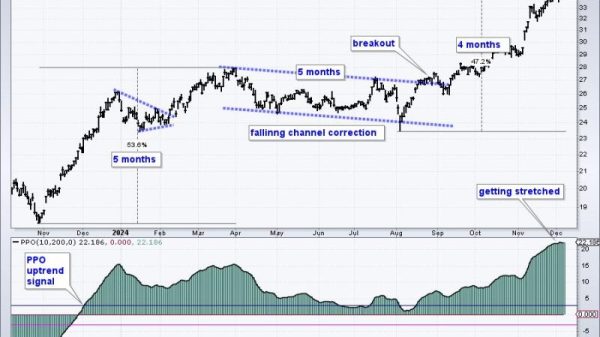The recent selloff in the software and semiconductor sectors has sent ripples through the S&P 500 index, causing a notable downturn in the overall market sentiment. As investors grapple with uncertainties surrounding these key industries, it is crucial to understand the underlying factors driving this significant market movement.
Software stocks have long been viewed as high-growth assets, with many companies in the sector experiencing rapid expansion and soaring stock prices in recent years. However, concerns over valuation bubbles and potential market saturation have sparked fears of a looming correction. The recent selloff in software stocks can be attributed to a combination of profit-taking by investors and a broader market reassessment of growth prospects in the sector.
Similarly, the semiconductor industry’s recent struggles have further exacerbated the downward pressure on the S&P 500 index. Semiconductor stocks have historically been sensitive to macroeconomic trends, with demand for chips heavily influenced by global economic conditions. The ongoing semiconductor shortage, exacerbated by supply chain disruptions and geopolitical tensions, has contributed to the heightened volatility in the sector.
Moreover, the semiconductor industry faces mounting challenges related to rising production costs and technological advancements. As companies invest heavily in research and development to keep pace with innovation, profit margins may come under pressure, leading to concerns among investors.
The interplay between software and semiconductor stocks is particularly crucial given the increasing integration of these technologies across various industries. The performance of these sectors often serves as a barometer for broader market trends, making their recent selloff a cause for concern among market participants.
Looking ahead, investors will closely monitor key developments in the software and semiconductor industries to gauge the potential impact on the S&P 500 index. Factors such as corporate earnings reports, regulatory changes, and global economic conditions will play a critical role in determining the trajectory of these sectors and, by extension, the broader market.
In conclusion, the recent selloff in software and semiconductor stocks has underscored the inherent volatility and interconnectedness of these key industries. As investors navigate these challenges, maintaining a diversified portfolio and staying informed about sector-specific trends will be essential for navigating the evolving market landscape.


























